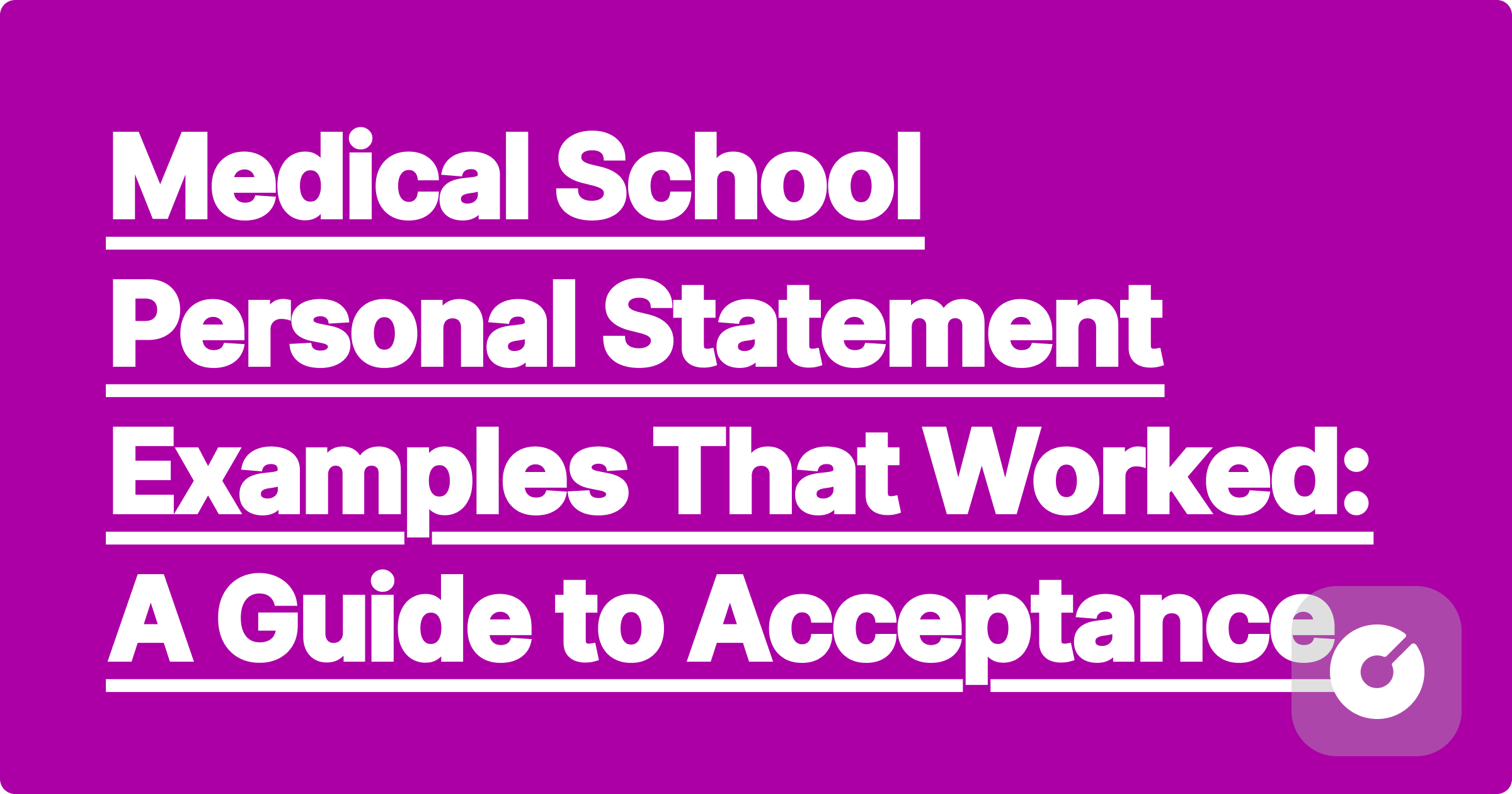
The journey to becoming a doctor is long and demanding, but the personal statement is your first crucial step. It's your opportunity to showcase your personality, experiences, and aspirations to admissions committees, differentiating you from thousands of other applicants. This comprehensive guide will explore successful medical school personal statement examples, provide actionable advice, and offer crucial information on costs, timelines, and university-specific requirements for the 2024 application cycle.
In 2024, medical school acceptance rates remain highly competitive. While precise national averages fluctuate slightly year to year, expect acceptance rates to hover around 4-6% for many top programs. This fierce competition underscores the critical role of a compelling personal statement. A weak statement can instantly disqualify you, regardless of your stellar GPA and MCAT score. Conversely, a strong statement can elevate your application, making you a standout candidate.
A winning personal statement isn't just a list of accomplishments; it's a narrative that reveals your character, motivations, and commitment to medicine. Key components include:
Compelling Narrative: Craft a story that engages the reader from the first sentence. Focus on a specific experience that shaped your desire to pursue medicine.
Authenticity: Be genuine and avoid clichés. Admissions committees can easily detect inauthenticity.
Reflection and Growth: Show how you've learned and grown from challenging experiences. This demonstrates self-awareness and resilience.
Clear Connection to Medicine: Explicitly link your experiences and insights to your aspirations to become a physician.
Strong Writing: Employ clear, concise language, avoiding jargon and grammatical errors.
Analyzing successful examples can provide valuable insights. Note: Due to confidentiality concerns, we cannot reproduce actual submitted statements. However, we can provide hypothetical examples illustrating key elements:
Example 1: The Unexpected Mentor
This statement could focus on an unexpected encounter with a community health worker, detailing the impact of their dedication and how it ignited a passion for serving underserved populations. The narrative would highlight the applicant's growth in empathy, resilience, and understanding of health disparities.
Example 2: Overcoming Adversity
This statement could explore a personal struggle—a serious illness, family hardship, or academic setback—and how overcoming this challenge fostered resilience, problem-solving skills, and a deeper understanding of human vulnerability. The narrative would emphasize the applicant’s ability to learn from adversity and apply these lessons to their medical aspirations.
Example 3: The Unexpected Passion
This statement could detail a seemingly unrelated experience—volunteering at an animal shelter, working in a research lab, or participating in a community arts program—that unexpectedly revealed a crucial skill set or personal quality relevant to medicine, such as empathy, teamwork, or meticulous attention to detail.
Brainstorming: Spend ample time brainstorming experiences that highlight your strengths and aspirations.
Outline: Create a detailed outline before starting to write.
Show, Don't Tell: Use vivid language and specific examples to illustrate your points.
Seek Feedback: Share your draft with trusted mentors, advisors, and peers for constructive criticism.
Multiple Revisions: Revise and refine your statement multiple times before submitting.
Proofread Carefully: Ensure your statement is free of grammatical errors and typos.
Applying to medical school is expensive. Expect to spend several hundred dollars on application fees alone, with costs varying widely by university. Furthermore, the MCAT exam itself can cost around $350, with additional expenses for preparation courses.
Timeline:
Summer before application year: Begin brainstorming, researching schools, and preparing for the MCAT.
Summer-Fall: Take the MCAT, request letters of recommendation, and begin drafting your personal statement.
Early Fall - Late Fall: Complete your application, including secondary applications (these are submitted after you get a primary acceptance).
Winter-Spring: Attend interviews.
Spring-Summer: Receive acceptance decisions.
Remember that these are estimates and vary year to year. Always consult official university websites for the most up-to-date information.
University A (Hypothetical): Acceptance Rate: 3%, Average GPA: 3.9, Average MCAT: 520
University B (Hypothetical): Acceptance Rate: 5%, Average GPA: 3.8, Average MCAT: 515
* University C (Hypothetical): Acceptance Rate: 7%, Average GPA: 3.7, Average MCAT: 510
Your personal statement is your chance to shine. By carefully crafting a compelling narrative, reflecting on your experiences, and showcasing your unique qualities, you can significantly improve your chances of acceptance into your dream medical school. Remember to start early, plan meticulously, and seek feedback throughout the process. The journey may be challenging, but with dedication and careful preparation, you can achieve your goal of becoming a physician. Good luck!
Second Career Medical Students: Changing Paths to a Rewarding Career
Foreign Medical Schools for US Students: A Comprehensive Guide for 2024 and Beyond
Osteopathic Medicine: Growing Acceptance and Benefits for Aspiring Physicians
Joint Degree Programs: MD/MBA, MD/JD, MD/MPH – Your Path to a Multifaceted Career in Medicine
Medical School Waitlist Strategies That Work: A Comprehensive Guide for 2024 Applicants
Yale Pre-Med Requirements and Medical School Acceptance Rates: Your Comprehensive Guide to Success
Physician Assistant vs. Medical School: A 2024 Decision Guide for Pre-Med Students
Part-Time Work During Medical School: Is It Possible? A Practical Guide for Pre-Med Students
Medical School Housing: On-Campus vs. Off-Campus – A Comprehensive Guide for 2024 & Beyond
Balancing Relationships During Medical School: A Guide for Pre-Med Students